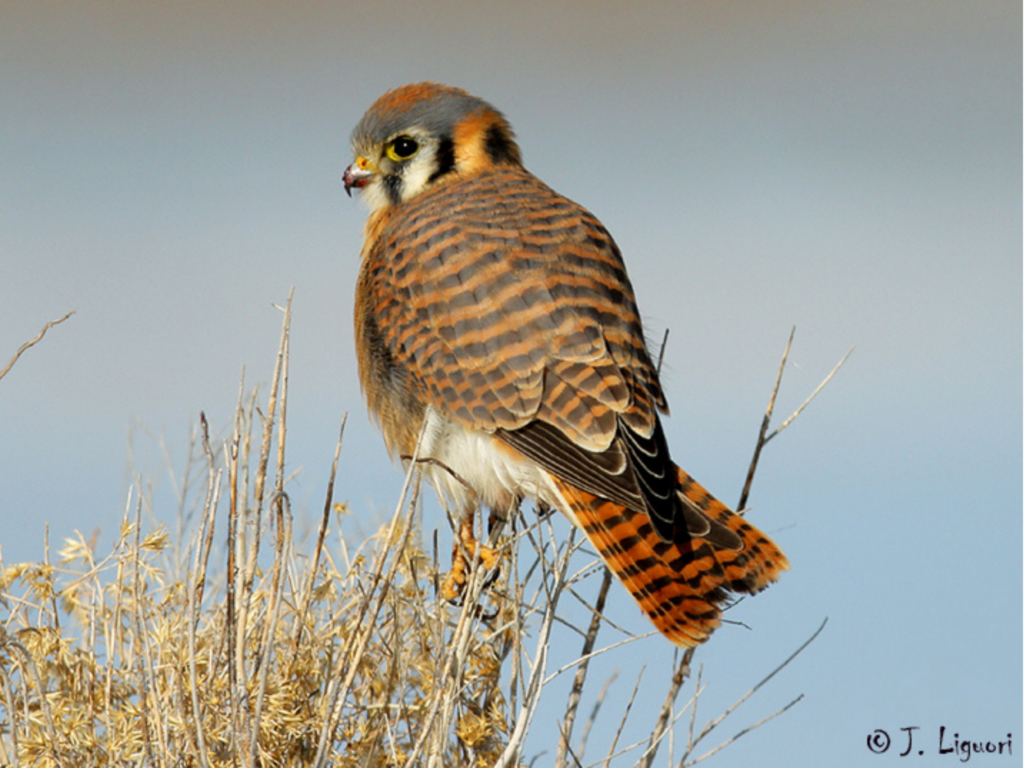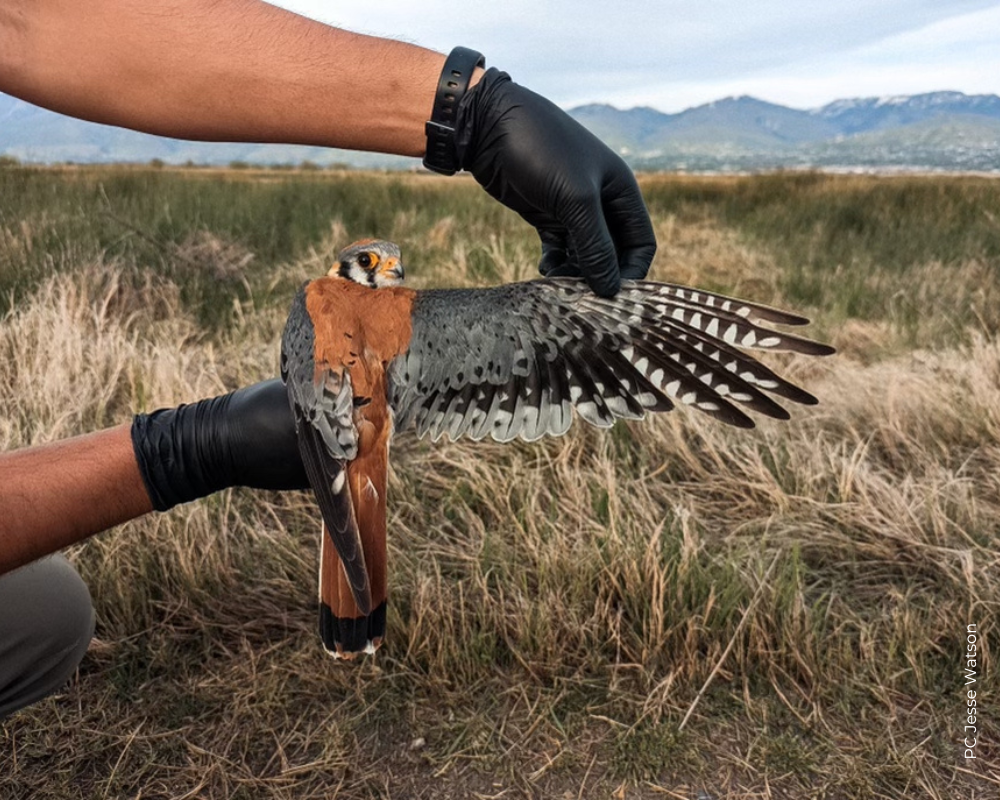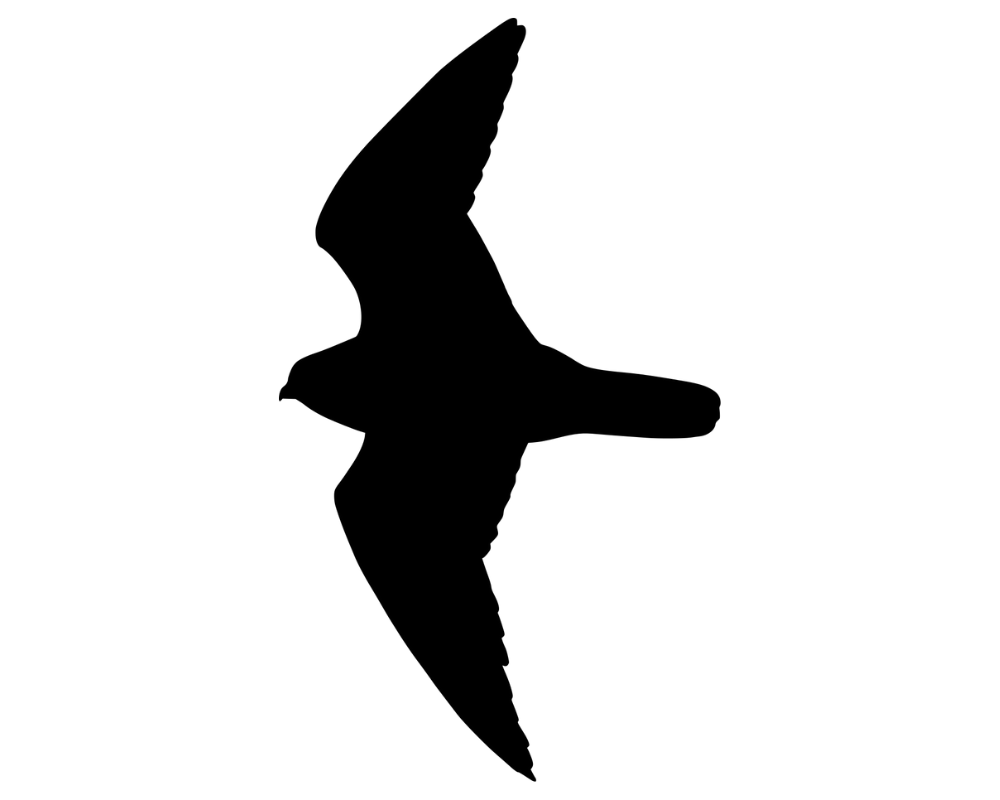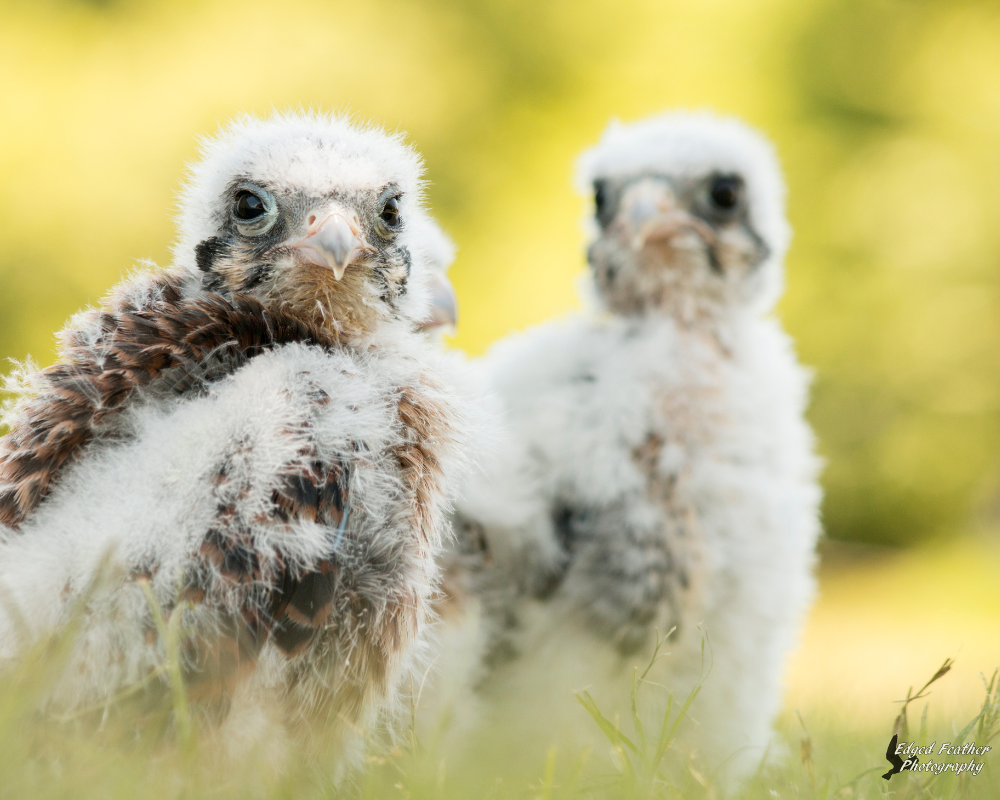Overview
The American Kestrel is the smallest North American falcon (about the size of a jay). They are colorful birds of open country, regularly seen sitting along roadsides or hunting over fields. They are skilled at hunting from a perch, dropping down on mice hiding in the grass, lizards camouflaged in the sand, or insects that catch their eye. However, they are famous for their hover-hunting abilities, which they do more adeptly than any other raptor! When hovering, they scan the horizon for prey while remaining in the same precise airspace, allowing them uninterrupted focus. Kestrels also catch dragonflies and butterflies on the wing, picking them apart in mid-flight. Larger prey (such as voles) is often half-eaten and hidden nearby for a later meal.
Kestrels are high-energy birds, appearing restless when perched, bobbing their heads or tails up and down, or vocalizing (an excited, high-pitched “klee-klee-klee”…) for no apparent reason. They flourish in populated towns or farmlands as well as in pristine deserts. They are cavity-nesting birds, and frequent artificial nest boxes, abandoned buildings, or even nest in roof openings of active residences. In more rural areas, they use holes in trees or cliff-face crevices as nest substrates. Males and females are essentially equal in size.




